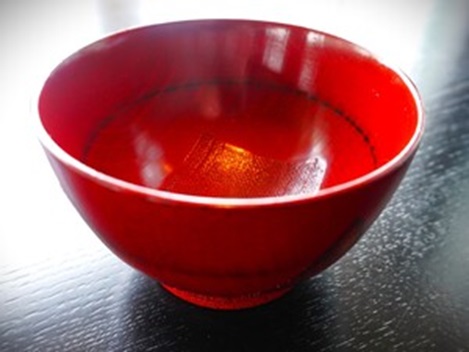2024.04.18
Columns/EssaysChu-chan's “Go Straight Towards Japanese Traditional Culture" 【PART3】 Aging and Beautification
Kondo Chuji = Director of Japan Traditional Culture Testing Association

Photo: Negoro Lacquerware, a traditional craft of Wakayama Prefecture
In my previous column, I wrote that the value of traditional crafts created by “Artisanal Skills" has been taken away by the trend toward nuclear families. Japanese wooden houses, furniture such as chests, and Buddhist altars, which are the accumulation of traditional crafts, are all designed to be used for generations to come. While industrial products deteriorate over time, the greatest feature of traditional crafts is that they “Beautify with Age". However, in an age where families are breaking apart, no one cares about such values, and lasting for hundreds of years has become an over-quality.
As a Showa-era person born in an era of mass production and mass consumption, and raised on the idea that “Consumption is a Virtue", the word that follows “Aging" is “Deterioration", and I never imagined that there would be another word to follow. So when I first heard the term “Beautifying Aging", I couldn't help but be a little shocked after a moment of confusion.
It must have been about 30 years ago when I met the then chairman of the Traditional Craftsmen's Association. When I asked him, “What is the difference between mass-produced products and the crafts you make?", he immediately replied, “It's the difference between deterioration over time and beauty over time". Sensing my confusion, the chairman explained, “Mass-produced products are at their best when they are made, that is, at the time of shipment. On the other hand, crafts become more comfortable in the hand the more they are used, develop character, and shine over decades or even centuries”.
It was a very convincing story. Industrial products, especially home appliances, deteriorate the more they are used. This is a typical example of deterioration over time. Also, for those of us who have lived in an industrial society where high-performance products are constantly being released, the latest models are the best, even if they are not used, and older ones are merely inferior. However, there is something in Japan that has the exact opposite value, and it has been passed down from generation to generation.
For example, there is a type of lacquerware called Negoro-Nuri. It was originally made as tableware for the monks of Negoro-ji Temple, the head temple of the Shingon sect of Buddhism in northern Wakayama Prefecture, to use during their daily training. To make it sturdy, a base coat of black lacquer is applied, and then a vermilion lacquer coat is applied using cinnabar (a mineral that contains mercury sulfide and has long been prized as a red paint).
If you use it carefully for decades, even a hundred years, the vermilion color will naturally fade from friction with your fingers, revealing the black base and creating a speckled pattern of black on the vermilion background. With further use, the vermilion areas will eventually fade and the opposite scene will emerge: vermilion speckles on a black background. Of course, it is beautiful when it is first made in its pure vermilion color, but the more it is used, the more beautiful it becomes. This is nothing other than an irreplaceable beauty created by the natural process of time. Here, too, the essence of Japanese traditional culture, of treating nature as a friend and enjoying it, is evident.
To see the beauty of aging, it is not enough for a craftsman to make it with great care. The people who use it also cherish it and treat it with care, and this can only be achieved through a collaborative effort between the people who use it and nurture what the craftsman created. I feel that the phrase “Beauty of Aging" symbolizes a sustainable society that reconsiders our disposable culture.
Category: Columns/Essays




